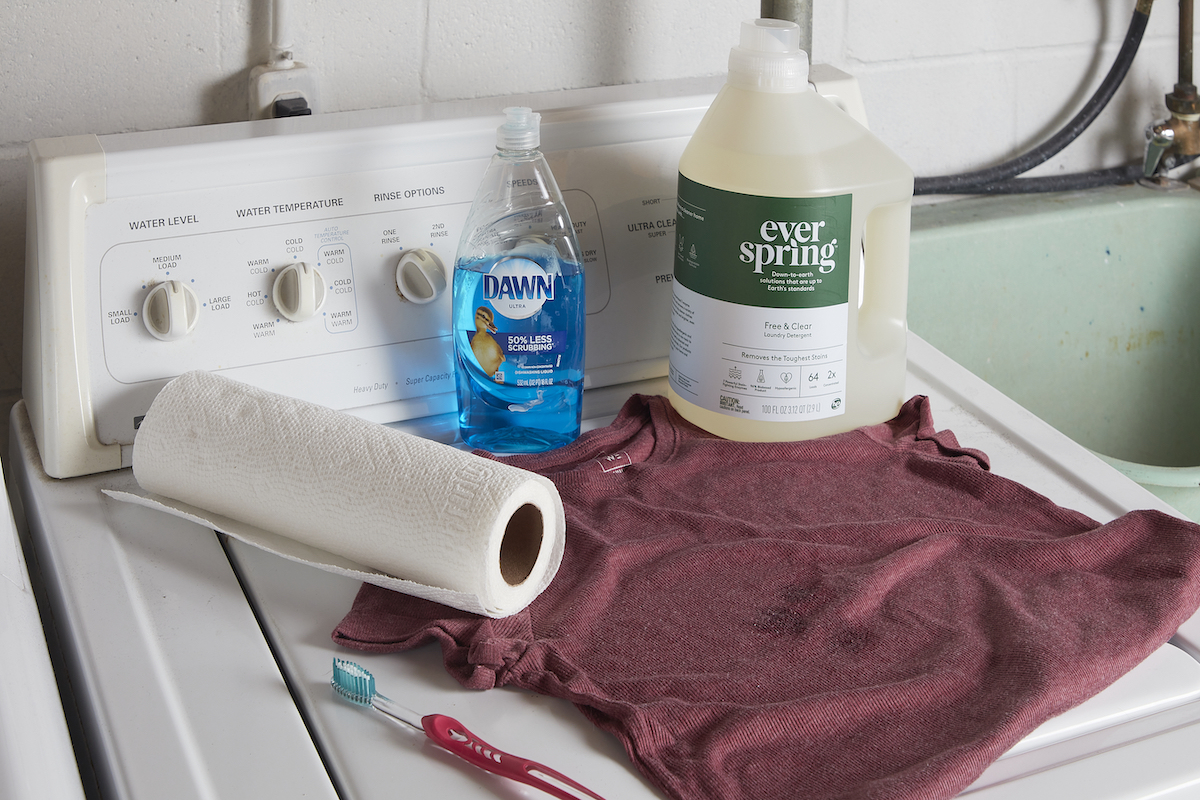We may earn revenue from the products available on this page and participate in affiliate programs. Learn More ›
When oil makes its way onto a favorite garment that isn’t possible to replace, you may feel desperate to find a cleaning solution. Beyond cooking oils that can splatter while preparing or enjoying a nice meal, you might be dealing with oil from things like cosmetics, skincare, essential oils, paint, or other household items.
If you need to know how to get oil out of clothes, the good news is that there’s a few easy fixes to remove the stain. Some of the fixes include ingredients such as stain remover, detergent, dish soap, baking soda and vinegar, or even chalk.
Stain remover can get deep into clothing fibers, while dish soap cuts through grease in the same way it does on dishes. Baking soda absorbs the oil, pulling it off of the fabric, which is a great method for heavy garments that can’t be machine washed or must be dry cleaned, like a wool blazer. Chalk, believe it or not, works in a similar way to baking soda, but it’s best for treating lighter stains and splatters.
Here are some simple steps to remove oil from your clothes using two ways: the detergent method, and baking soda and vinegar method.
Before You Begin
It’s important to follow these cleaning methods carefully, as using water or the high heat of a dryer may actually make it much harder to remove the oil stain from clothes. High heat can bind the oil to the fabric, which can make the stain much tougher to get out.
How to Get Oil Out of Clothes Using an Enzyme-Based Detergent
SUPPLIES
Cloths, paper towels, or napkins
Dish soap
Toothbrush
Enzyme-based liquid detergent
Bleach (optional, for white garments only)
Step 1: Act quickly and blot the stain with a paper towel or cloth immediately after spilling.
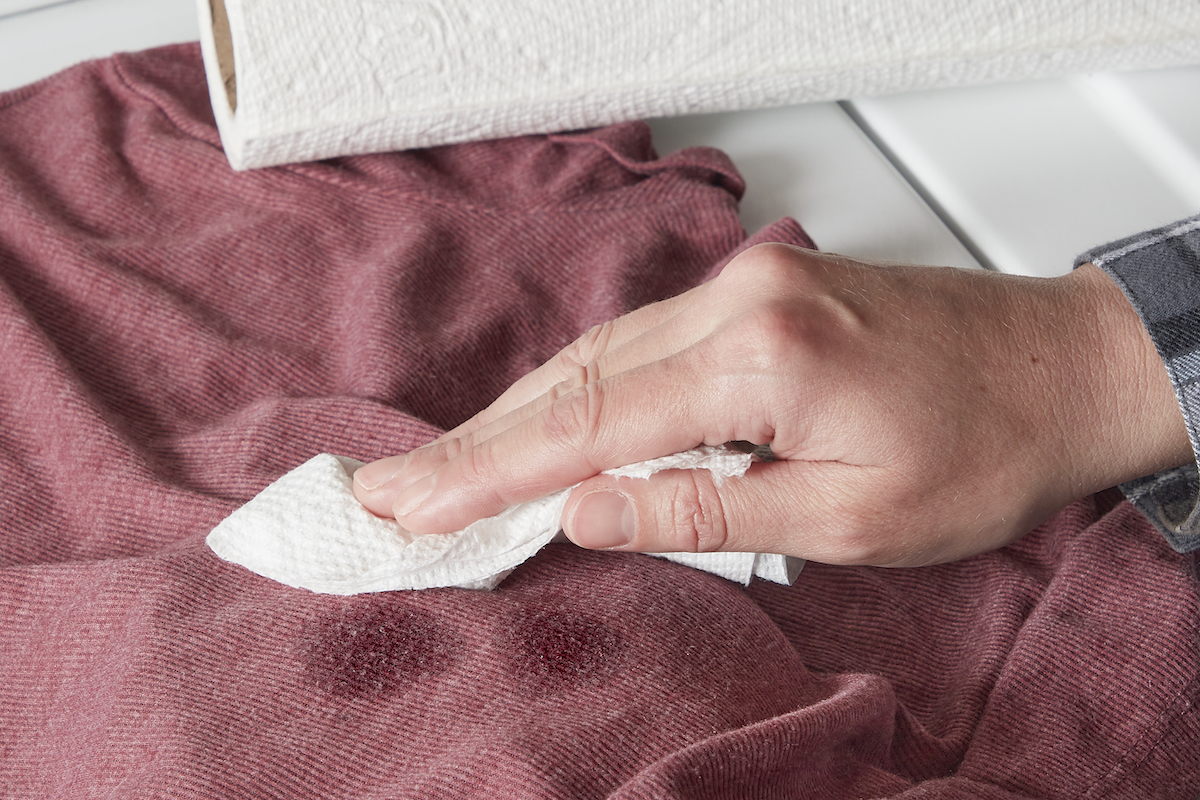
Oil stains will darken as time passes and after the fabric is dry, stains can end up permanently set in clothing. As soon as a stain is spotted, use a dry cloth or paper towel right away to blot as much oil off the fabric as possible.
It may be tempting, but don’t rinse oil-stained clothes with water. Since oil and water don’t mix, water can create a coating around the oil and prevent it from moving off of the fabric.
Step 2: Press the stain gently from both sides to soak up excess oil.

This step is important, as it makes treating the stain much easier. Using a dry and clean cloth, paper towel, or napkin, carefully press or blot the stain from both the inside and outside of a garment. Blot to get rid of as much excess oil as possible until there is no residual liquid. Carefully use the cloth, so that it doesn’t accidentally spread the oil around to the clean areas of the fabric and create a bigger mess.
Step 3: Check the fabric care label to determine the washing temperature.
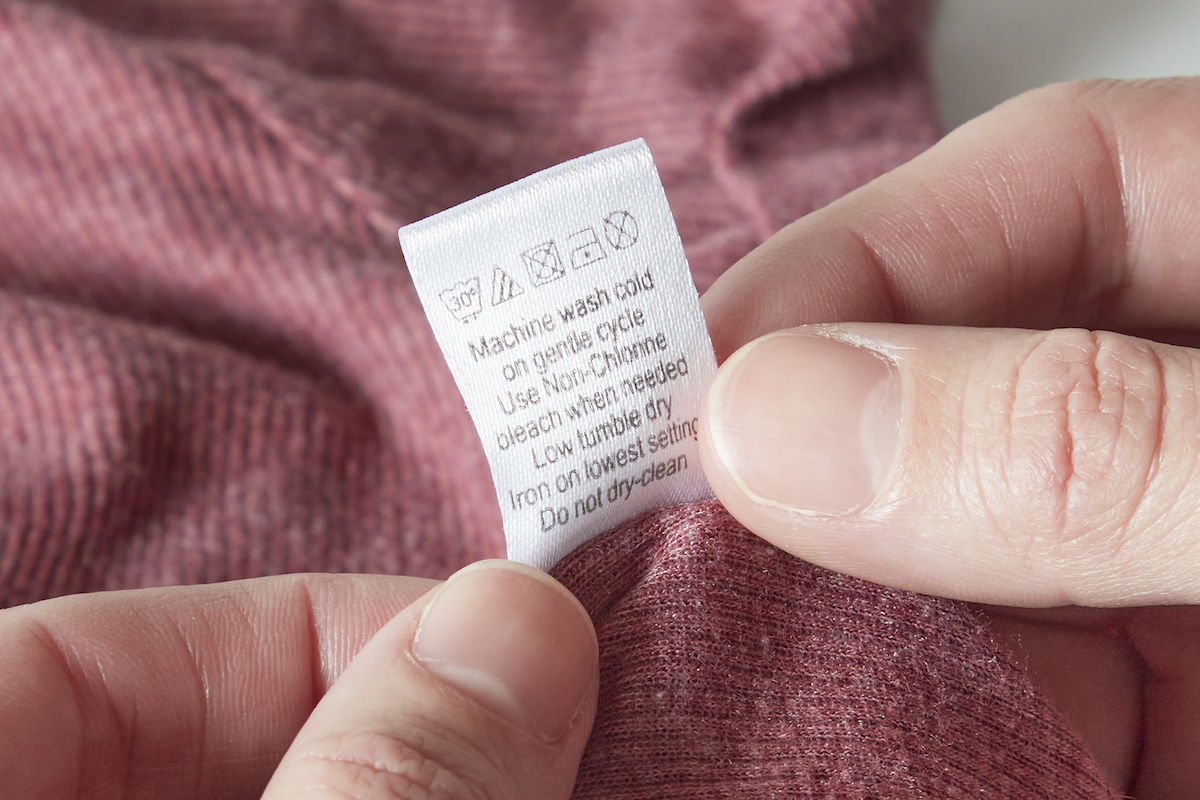
Before washing the stained clothing, it’s important to know the hottest temperature at which it can be safely washed. It’s true that the warmer the water is, the more easily the oil will completely come out of the garment, but water that’s too hot for a fabric could damage or shrink a delicate material.
Washing temperature information is usually found on the garment’s label. There might be common symbols for cold washing between 65 and 85 degrees Fahrenheit, warm washing to a maximum temperature of 105 degrees, or hot washing at no more than 120 degrees.
Step 4: Pre-treat the stain with dish soap.
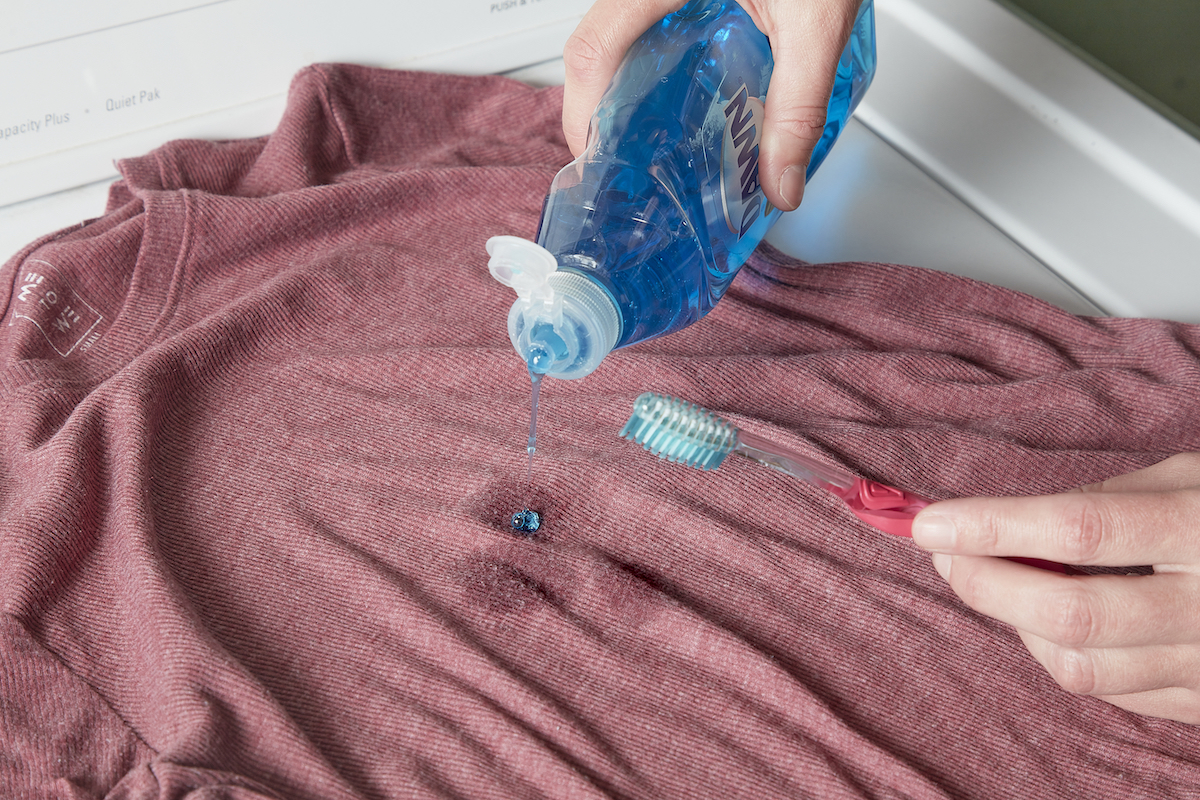
For this step, use a simple dish soap that specifically removes grease. Sometimes, the gentler formulas that are great for hands contain moisturizers, essential oils, or other ingredients that could actually decrease their effectiveness in removing oil.
Squeeze a few drops of dish soap onto the stain and let it soak in for a few seconds. Next, use a cloth, a soft-bristled toothbrush, or your fingers to carefully rub the soap in gently. It’s important to not push too hard. There’s a fine line between penetrating the fabric sufficiently without pushing the stain in deeper. Let the soap soak into the stain for about 5 minutes.
Step 5: Wash with enzyme-based liquid detergent to remove the toughest stains.
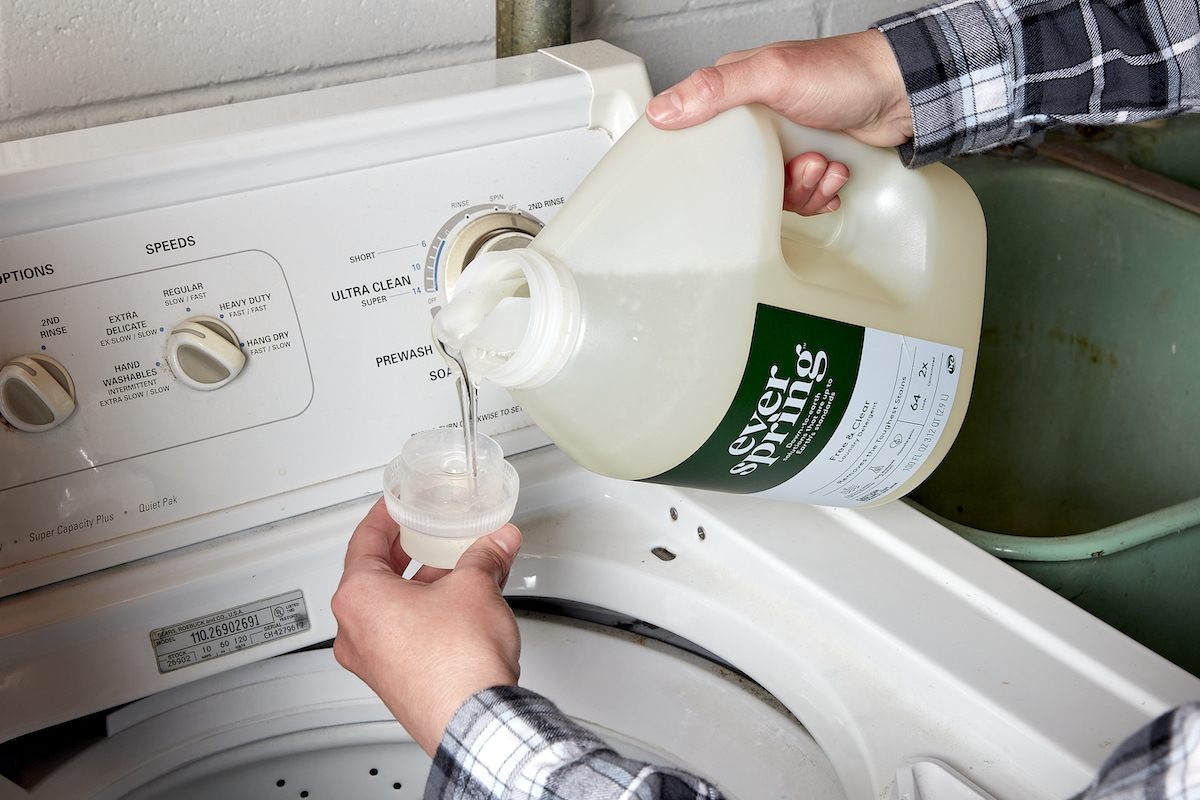
Using an enzyme-based liquid detergent designed to remove tough stains like oil, wash the clothing as directed by the fabric label. As mentioned in Step 3, this can likely be in hot water, but be sure to check the tag first since hot water can damage some fabrics. If the item is white and made from bleach-safe material, bleach could also be added.
If the oil isn’t completely gone when the cycle is done, try repeating Steps 3 through 5 again before drying the item.
How to Get Oil Out of Clothes Using Baking Soda and Vinegar
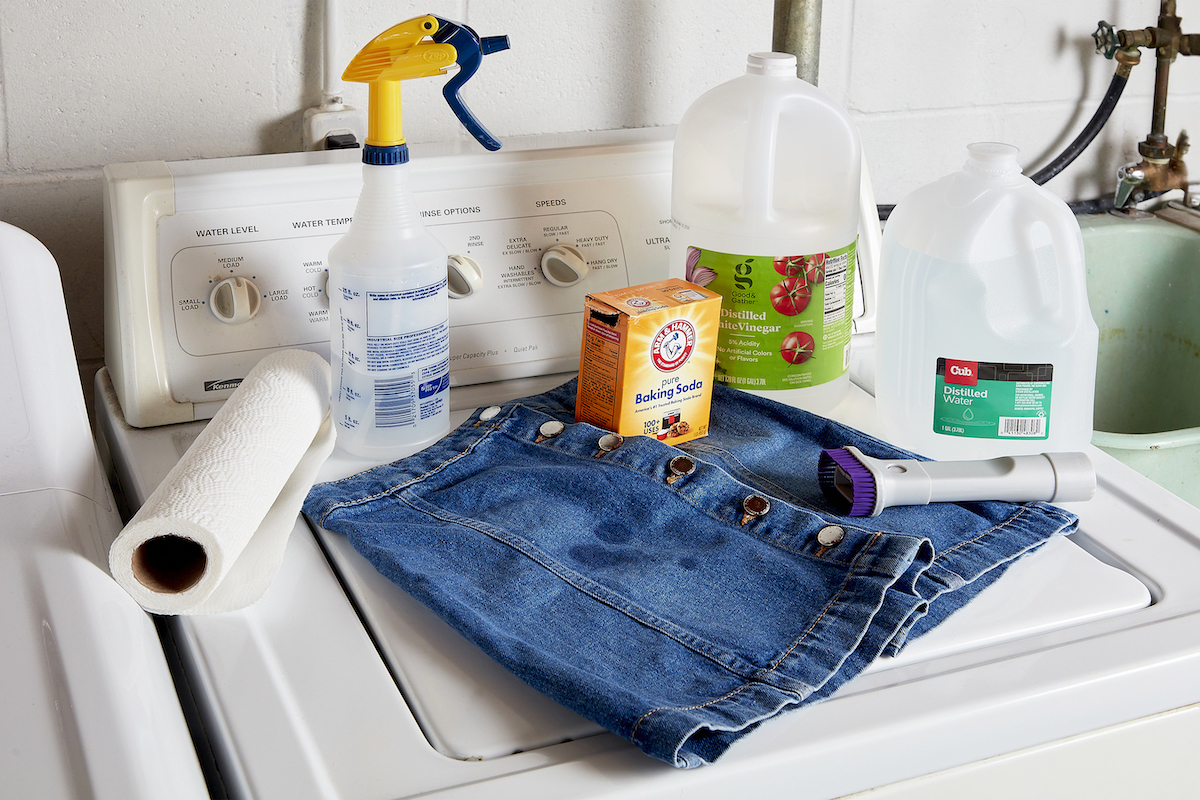
SUPPLIES
Baking soda
Vacuum with brush attachment
White vinegar
Distilled water
Spray bottle
Step 1: Remove excess oil using a cloth or paper towel.
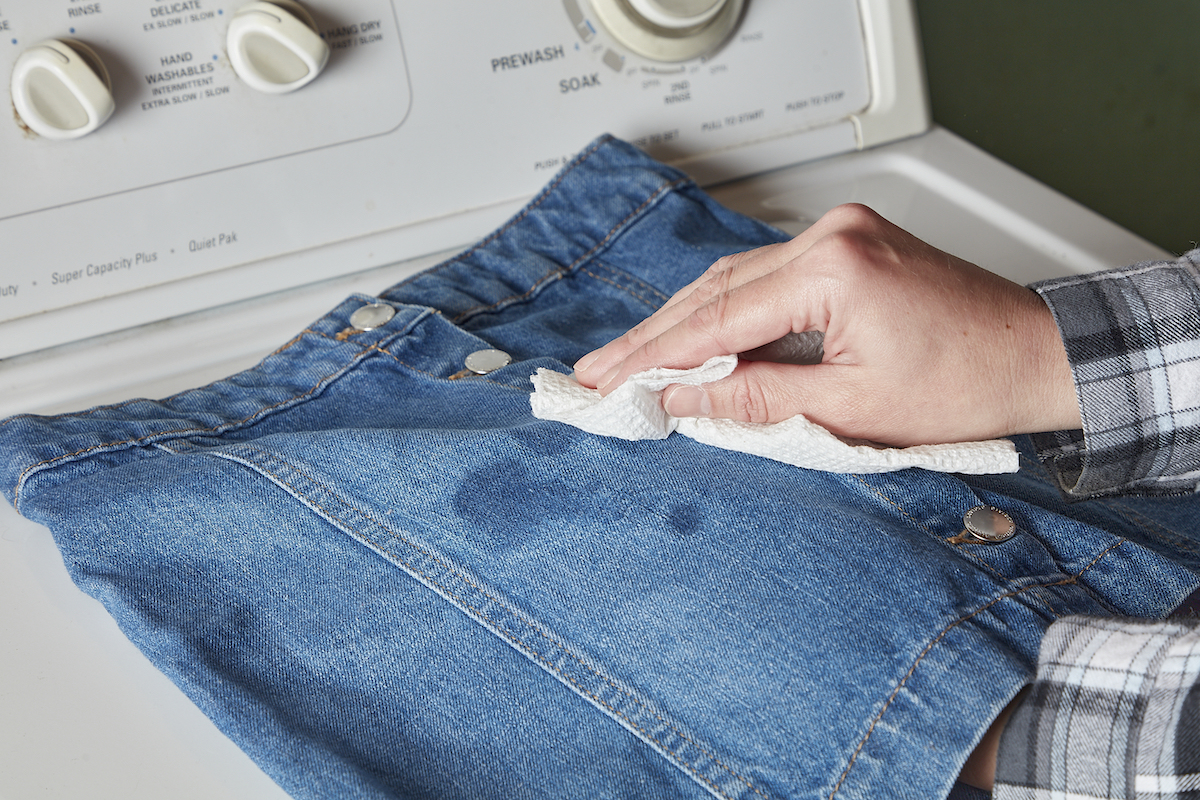
As soon as a stain is noticed, it’s important to try to get rid of as much excess oil as possible. To do this, blot the stain with a dry paper towel or cloth. The goal is to get the clothing as dry as possible. Don’t rinse at this point, as water could coat around the oil and prevent the oil from leaving the fabric.
If dealing with smaller stains, this single step might even be all that is needed to clean the fabric.
Step 2: Sprinkle the stain with baking soda and let sit for 24 hours.
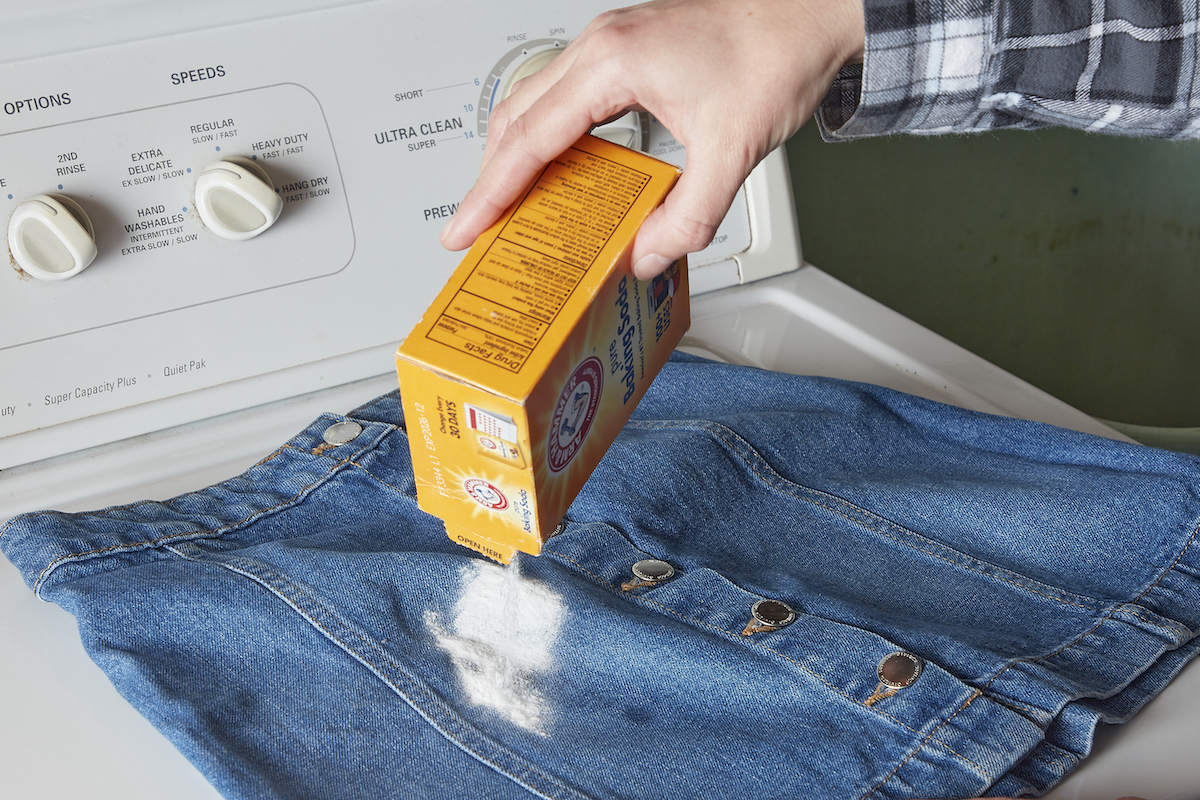
If there is still an oil stain, apply a generous amount of baking soda on both sides of the affected area until a layer that’s a few millimeters thick covers the stain. Cornstarch can be swapped for baking soda, as it works just as well to absorb oil from fabric. Make sure the garment sits for a full 24 hours with the layer of baking soda. This allows ample time for the baking soda to absorb the oil.
Step 3: Brush the baking soda away.

After the 24-hour period has passed, the baking soda may appear clumped. It’s normal and a good sign when the baking soda clumps up, as it means absorption is happening. Remove the baking soda using a toothbrush or vacuum attachment to brush off the baking soda from the clothing.
If it’s a particularly stubborn stain and oil is still visible on the fabric, repeat this step until the residual oil is soaked up.
Step 4: Make a solution of water and vinegar, and spray the affected area.
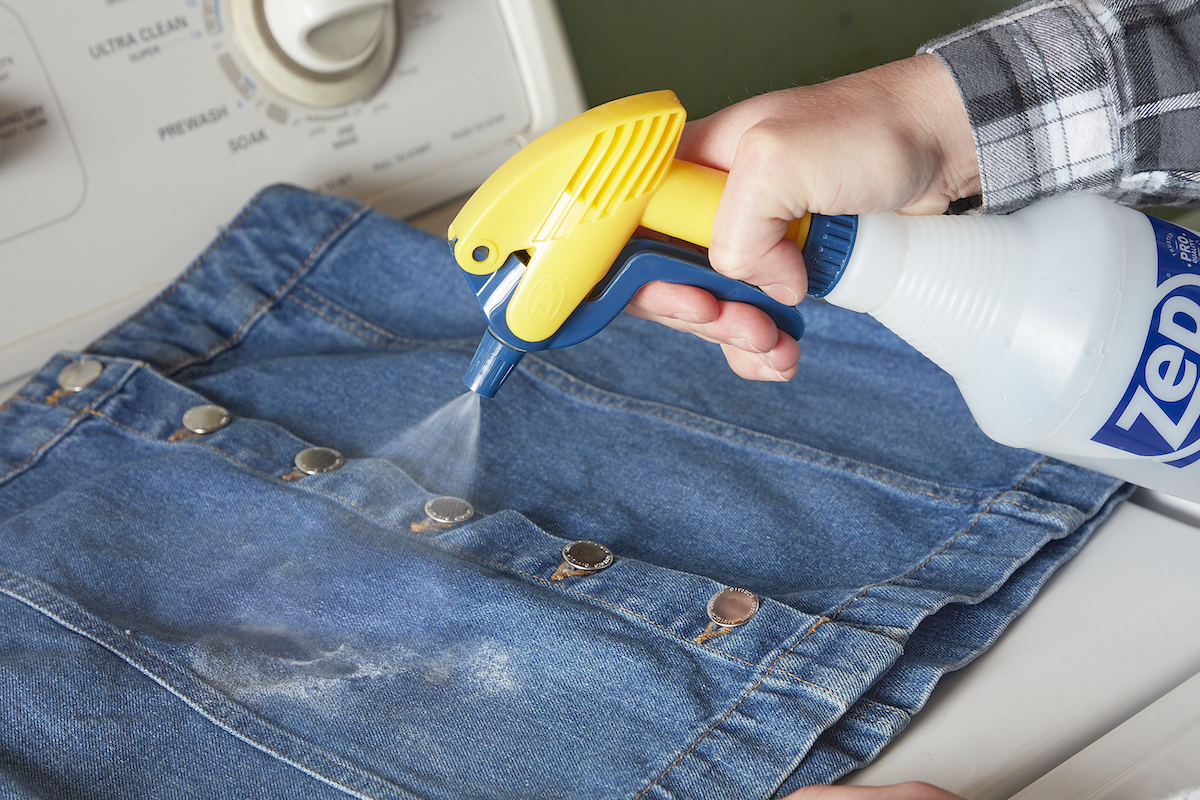
Vinegar is an ally and a time-saver when it comes to removing oil from clothes, thanks to its acetic acid that cuts through grease. Vinegar also helps deodorize and remove the smell that can linger from oil. When working with vinegar on stains, dilute the vinegar by mixing it with water to protect clothing from fading or bleaching.
Using equal parts vinegar and water, mix in a spray bottle. Then, spray both sides of the stained part of the garment and let it soak for 30 to 60 minutes.
Step 5: Using soap and a brush, scrub the stain.
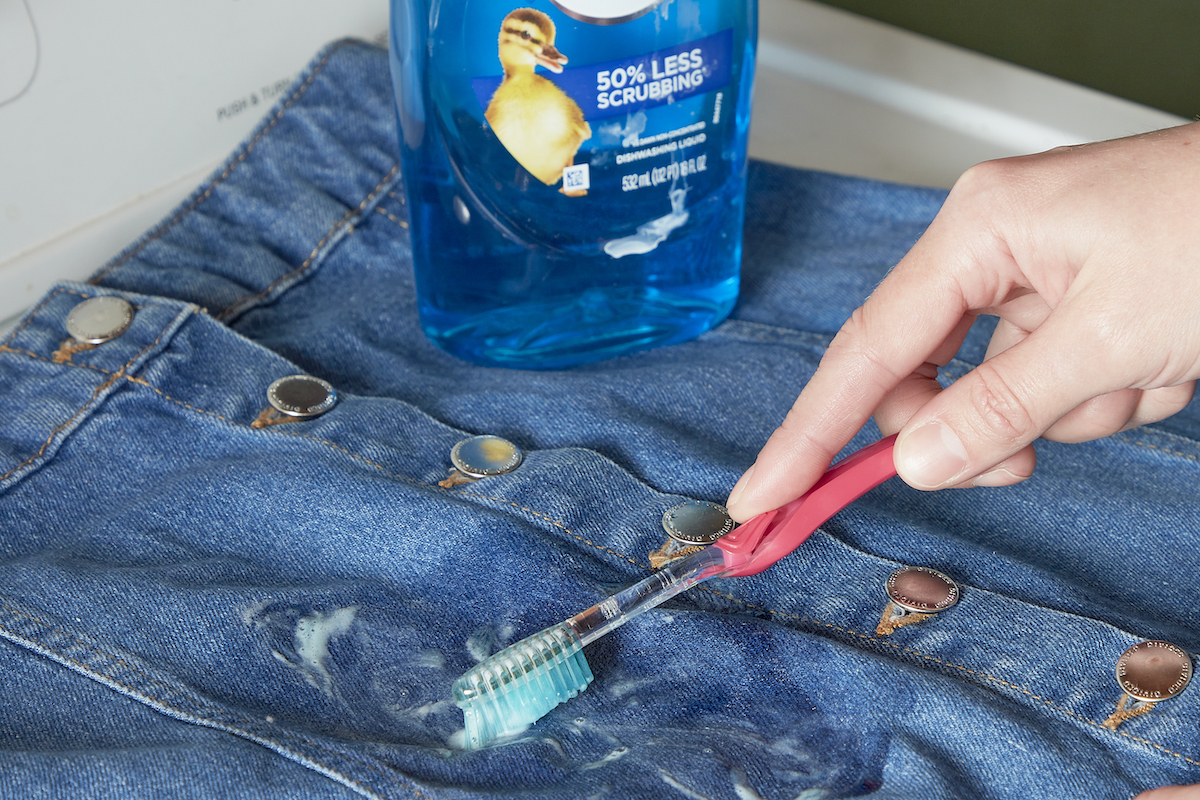
After the garment has soaked in the vinegar-water mix, it’s time to check the stain. If the water-vinegar solution has sufficiently soaked up the stained area, grab an old toothbrush and dish soap to scrub the stain out. Try to use gentle pressure while cleaning more delicate fabrics to protect them from any potential damage. When the stain seems to be gone, carefully blot the material with a dry cloth.
Step 6: Repeat steps 4 and 5 until the stain dissipates.
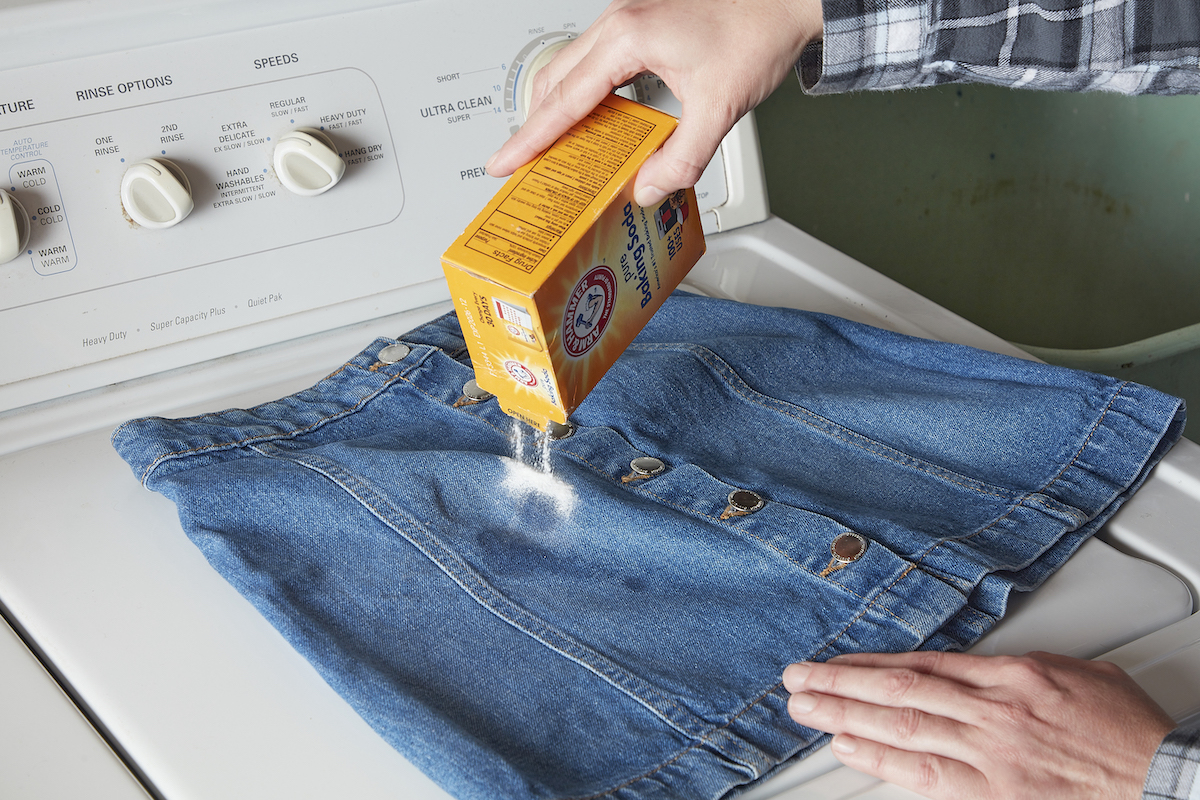
If the stain is still visible after blotting and rinsing, repeat steps 4 and 5. Try applying more baking soda or more of the vinegar-and-water solution to the problem area if a stain seems to be an extra tough one to remove. Use your best judgement to decide which adjustment to take. Since there are so many kinds of oil stains and fabrics, cleaning oil stains out of clothes can be a process of trial and error.
Final Thoughts
These tried-and-tested cleaning methods can help lift a pesky oil stain right out of favorite clothes, so they can be enjoyed again for years to come. Whether they were stained from cooking, using aromatherapy oil, or applying grease to a door hinge, these steps can be the first line of defense to remove an unwanted mark. The best part is that they’re easy cleaning methods, and the key ingredients of laundry detergent, baking soda, and vinegar may already be on hand.
Plagued by wine, coffee, and other stains around the home? See our comprehensive stain removal guide.
